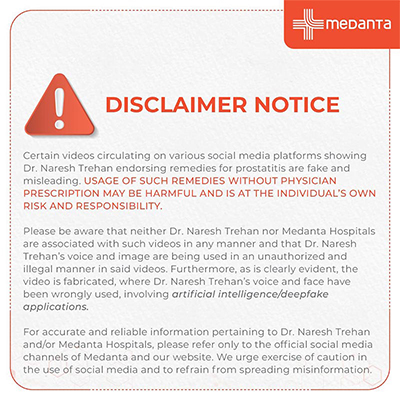What is MICS? Breaking Down the Basics of Minimally Invasive Cardiac Surgery

TABLE OF CONTENTS
MICS surgery has revolutionised cardiac treatment. The procedure needs only 2-4 inch incisions instead of the 6-12 inches used in traditional open-heart surgery. Patients feel less pain, lose less blood, and can go home in 3-5 days. Traditional surgery patients need 7-14 days to recover.
MICS lets doctors perform complex heart procedures through tiny incisions. The surgery treats heart conditions of all types, from valve repairs to atrial septal defect corrections and coronary artery bypass grafting. It also reduces risks like wound infections, stroke, and breathing problems, giving patients a better life after surgery.
MICS has proven to be remarkably successful. Modern techniques like robotic-assisted surgery give doctors better precision and control during operations. Patients' bodies undergo less trauma, which helps them return to their daily routines faster. Their heart function also improves dramatically after the procedure.
Minimally Invasive Cardiac Surgery (MICS) performs heart operations through small incisions without cutting the breastbone or sternum. The Society of Thoracic Surgeons' criteria for MICS includes using smaller incisions that differ from conventional median sternotomy and performing surgery without cardiopulmonary bypass.
Surgeons make small incisions between the ribs to reach the heart during MICS procedures. These incisions measure about 2 to 4 inches, which is significantly smaller than traditional open-heart surgery's 6 to 8-inch cuts. Specialised instruments and high-definition cameras help surgeons see inside the chest cavity through these small openings.
MICS offers two main surgical approaches:
Thoracoscopic surgery: Surgeons create small chest wall incisions and insert a long tube with a video camera (thoracoscope). This camera provides visualisation while they operate using specialised long, thin tools.
Robotically-assisted heart surgery: A surgeon controls robotic arms from a nearby computer console. The system delivers a magnified 3D heart view that allows precise movements through small incisions.
Surgeons use MICS for many heart procedures, such as valve repair or replacement, coronary artery bypass grafting (CABG), atrial septal defect closure, cardiac tumour removal, and maze procedures for atrial fibrillation. MICS CABG requires a 5-7 cm incision in the 4th intercostal space, along with additional small access incisions at the 6th intercostal space and xiphoid process that position heart-stabilising instruments.
MICS CABG typically operates on a beating heart without stopping it or using a heart-lung machine. This off-pump CABG or beating heart surgery eliminates the need for cardiopulmonary bypass.
Modern instrumentation, improved visualisation techniques, and specialised vascular entry methods for perfusion have boosted the safety and effectiveness of these procedures.
MICS heart surgery benefits are way beyond the reach and influence of the operating room. Patients see substantial improvements throughout their recovery experience. Because the procedure doesn't cut through the breastbone, MICS patients face less trauma to chest tissues. Their chest wall stays intact and heals much faster.
Recovery time shows a dramatic difference. Traditional open-heart surgery patients need 6-12 weeks to recover. MICS patients get back to their normal activities in just 2-4 weeks. They leave the hospital sooner, too - usually after 3-5 days versus the typical 7-10 days for conventional procedures.
Pain control becomes easier with MICS surgery. Patients feel less post-operative discomfort and need fewer strong pain medications. Better comfort helps them move around earlier and recover smoothly.
MICS leaves smaller marks on the body. The surgery needs only 2-3 inch incisions. These small scars often fade and become hard to notice over time.
Other major benefits include:
Reduced blood loss
Lower infection risk
Fewer breathing problems due to less chest trauma
Quick return to work - some patients start light activities within 7 days
Quality of life improves remarkably with MICS
Research shows that these patients recover faster and score higher on quality-of-life measures than conventional surgery patients. Patients who get robotic MICS can regain almost 100% of their physical function within three months, and their pain levels improve much faster than traditional methods.
MICS combines powerful medical benefits with improved patient experience. This makes it a preferred choice for eligible cardiac patients.
MICS heart surgery offers many benefits, but patients should really understand its risks and limitations before treatment. Just like any surgery, MICS has risks that need careful thought.
The risks that come with MICS are like traditional open-heart surgery. These include:
Bleeding
Heart attack
Infection
Irregular heart rhythms (arrhythmias)
Stroke
Death
MICS brings its own set of challenges. Not everyone can qualify for this approach. Patient selection is a vital part of the process, and several factors might rule out MICS as an option.
MICS won't work for patients with:
Severe coronary artery disease or multiple cardiac issues
Previous cardiac surgery
Severe peripheral vascular disease
Pulmonary disease or severe pulmonary hypertension
Need for combined operations (such as valve replacement plus coronary bypass)
Poor cardiac function from heart attack damage
Obesity, especially in shorter individuals
The surgical team makes the final call after a complete evaluation of the patient's condition.
You should know about the chance of switching to open surgery. This happens in about 2-3% of cases. Doctors mainly switched because of unexpected lung adhesions or technical problems accessing the target area. Death rates in late conversions can be three to five times higher than planned procedures.
MICS procedures face technical hurdles with their limited surgical field, longer operation times, and special equipment needs.
A surgeon's expertise makes a big difference, as results vary substantially between surgeons at the same medical centre. Studies show that more experienced surgeons have lower conversion rates.
MICS heart surgery is, without a doubt, a major step forward in cardiac treatment options. Surgeons can now perform complex procedures through 2-4 inch incisions instead of traditional 6-12 inch openings. Patients then experience less chest tissue trauma, lose less blood, and recover substantially faster.
Patients need to carefully weigh the procedure's benefits and limitations before choosing their cardiac surgery options. The recovery advantages are impressive—hospital stays last just 3-5 days, and patients return to normal activities within 2-4 weeks. This makes MICS an attractive option for qualified candidates. Every surgical procedure comes with risks that need thorough discussion with doctors.
MICS heart surgery has revolutionised cardiac care. Suitable patients can now access improved heart health with minimal scarring, less post-operative pain, and a quicker return to daily activities. The future looks promising as surgical techniques and technologies evolve, which could help even more patients benefit from these minimally invasive approaches.
What are the main advantages of MICS over traditional open-heart surgery?
MICS offers smaller incisions, less pain, reduced blood loss, shorter hospital stays, and faster recovery times. Patients often return to normal activities within 2-4 weeks, compared to 6-12 weeks for traditional surgery.
Is MICS suitable for all heart conditions?
No, MICS is not suitable for all patients. Factors such as severe coronary artery disease, previous cardiac surgery, obesity, or the need for combined operations may rule out this approach. A thorough evaluation by the surgical team determines eligibility.
How long does recovery typically take after MICS?
Most MICS patients are discharged from the hospital after 3-5 days and can return to normal activities within 2-4 weeks. Some patients even resume light activities within 7 days of the procedure.
What are the potential risks associated with MICS?
While generally safer, MICS still carries risks similar to traditional heart surgery, including bleeding, infection, irregular heart rhythms, and stroke. There's also a small chance of needing to convert to open surgery during the procedure.
How vital is surgeon experience in MICS procedures?
Surgeon experience is crucial for MICS success. Studies show that complication rates and the need to convert to open surgery decrease significantly as surgeons gain more experience with the technique.





